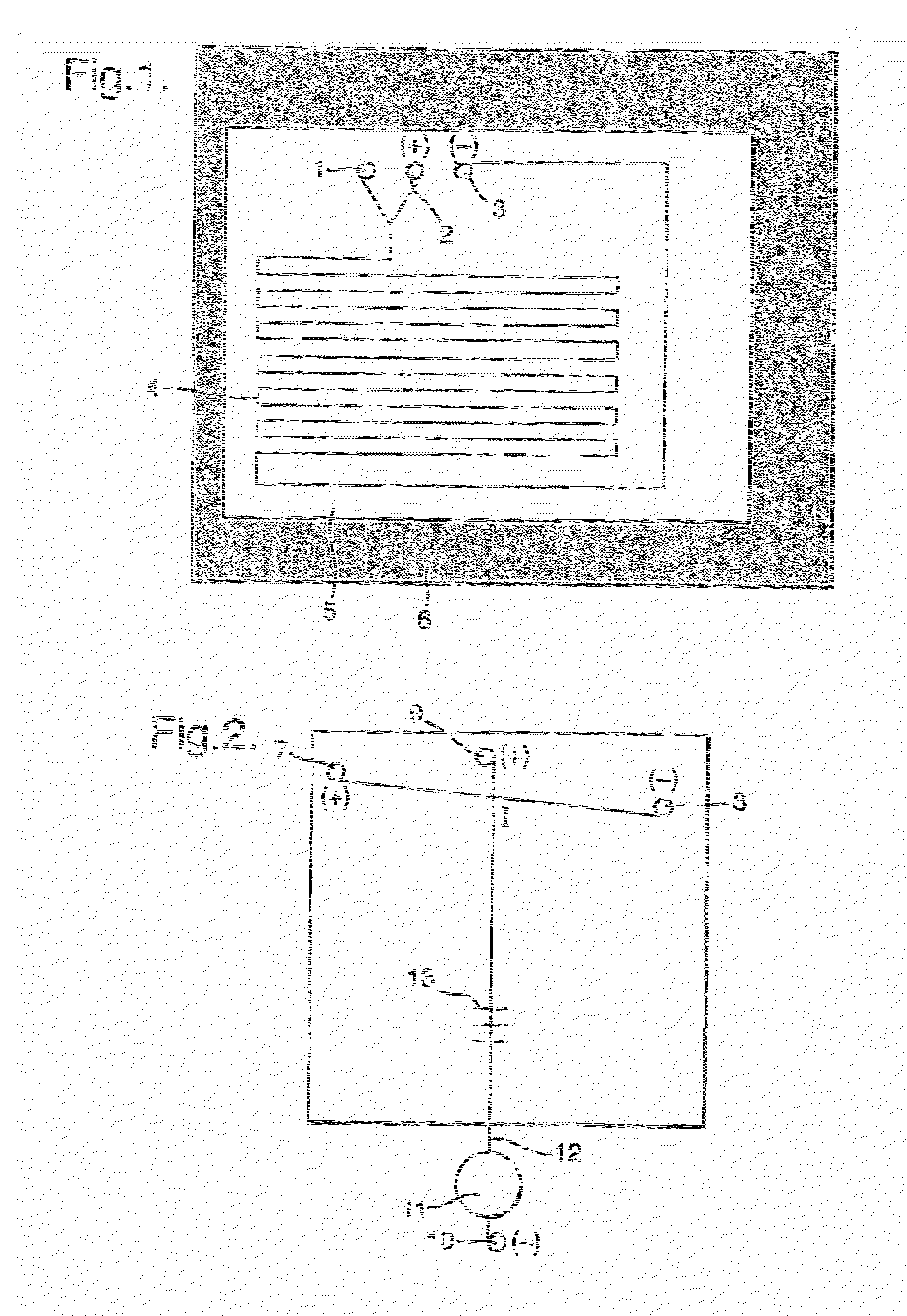Use of microfabricated devices
a microfabricated device and radiosynthesis technology, applied in the field of miniaturisation of radiosyntheses, can solve the problems of limited flexibility and capacity of the current approach to radiosynthesis automation and space consumption
- Summary
- Abstract
- Description
- Claims
- Application Information
AI Technical Summary
Benefits of technology
Problems solved by technology
Method used
Image
Examples
example 1
Radiolabelling of 2-[18F]fluorodeoxyglucose (FDG) using [18F]fluoride
[0075]
[0076]Azeotropic drying of [18F]fluoride was achieved using the following method. A glass drying-vessel was preloaded with Kryptofix[2.2.2.] (4 mg) and K2CO3 (4.6 mg) dissolved in 200 μl H2O and 800 μl acetonitrile. Into this vessel the aqueous [18F]fluoride (circa 1 ml) was added and the vessel heated to 120° C. with an over flow of nitrogen gas (circa 2 ml min−1). After 10 minutes of heating 1 ml of acetonitrile was added. Further 2 additions of 1 ml acetonitrile measures followed at 10 minute intervals until the fluoride was completely dry. Then with stirring at 80° C. (circa 2 min) the fluoride / Kryptofix[2.2.2.] residue was reconstituted in 1 ml acetonitrile (circa 26% efficient).
[0077]For ‘on-chip’ radiolabelling the dried K+ / K 2.2.2 / [18F]fluoride in acetonitrile was infused (using precision syringe drives) into one of the two chip inlets while tetra-acetylmannose triflate (FDG precursor) solution (10 mg...
example 2
[11C]Methylation of N-methylanaline
[0080]
[0081]Iodomethane in acetone and a solution of N-methylaniline containing sodium hydroxide in acetone at room temperature were introduced via fused silica capillaries onto the microfabricated mixing device. The eluate from the device was analysed by HPLC and shown to contain N,N′-dimethylaniline. [11C]Iodomethane is used in the same way, with heating of the device, to produce N,N′-[11C]dimethylaniline. Alternatively, [11C]methyltriflate or nonaflate are used to produce the same compound without heating the device.
example 3
Synthesis of L-3-[124I]-iodotyrosine iodotyrosine
[0082]
[0083]Aqueous solutions (containing 0.1 M KH2PO4) of iodide, chloramine-T and L-tyrosine were introduced onto a microfabricated device containing a mixing chamber (described in ref Gillies et a / above) via fused silica capillaries using Kloher micro syringe pumps under computer control at a flow rate of 50 μl per minute. The eluate from the device was analysed by reverse phase HPLC and shown to contain iodotyrosine which was isolated in pure form and its identity confirmed by mass spectrometry. The same procedure is used with iodine-124 to produce L-3-[124I]iodotyrosine.
PUM
| Property | Measurement | Unit |
|---|---|---|
| volumes | aaaaa | aaaaa |
| half life | aaaaa | aaaaa |
| half life | aaaaa | aaaaa |
Abstract
Description
Claims
Application Information
 Login to View More
Login to View More - R&D
- Intellectual Property
- Life Sciences
- Materials
- Tech Scout
- Unparalleled Data Quality
- Higher Quality Content
- 60% Fewer Hallucinations
Browse by: Latest US Patents, China's latest patents, Technical Efficacy Thesaurus, Application Domain, Technology Topic, Popular Technical Reports.
© 2025 PatSnap. All rights reserved.Legal|Privacy policy|Modern Slavery Act Transparency Statement|Sitemap|About US| Contact US: help@patsnap.com



